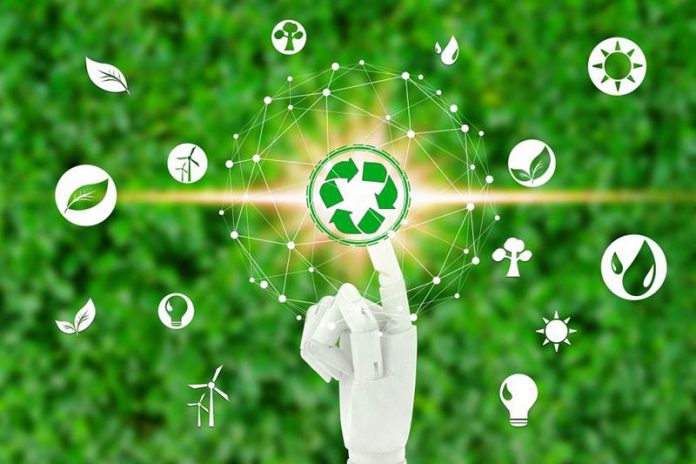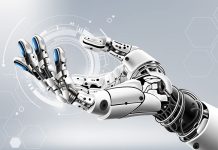The year 2020 was the hottest in Europe, and the temperature was 1,2C higher compared to the average year in the 19th century. Global warming might be the cause of an increase in sea level and the growing number of water-related catastrophes, and a decrease in arctic ice. Bill Gates believes that a cut in global emissions won’t be enough to solve our climate problem — “we need an energy miracle,” he mentions.
Let’s take a look at how innovations can help humanity mitigate climate changes and combat the greatest challenge we face: global warming.
Reducing emissions with digital technology
The digital technology sector is probably one of the most powerful influencers that can make people understand why taking action towards reducing their carbon footprint matters. Digital solutions can promote climate protection; for example, Blockchain technologies help to increase transparency and eliminate the constant increase in resource consumption which mainly occurs due to the lack of control. Just think about the number of lost and destroyed goods which became such because of the ineffective logistics.
The Blockchain implementation enables forgery-proof documentation of manufacturer data and calls for more conscious consumers’ decisions. Besides, the technology helps prevent various manipulations, ensures data transfer safety, and provides access to new information sources.
There are companies that help people sell excessive energy from their solar panels to their neighbors or sell solar power accumulated in the batteries. The users can set the prices themselves to benefit from selling energy. Meanwhile, all the transactions are recorded in the Blockchain to ensure the safety and transparency of the transactions.
With the Blockchain, the users can access the joint assets that are connected to the energy network via integrating the existing data sets. Such systems simplify decarbonizing and reduce the general operating expenses of the power grid.
Artificial intelligence as the way to protect forests and forecast wildfires
Artificial intelligence enables automatic determination of the location of wildfires. The rescue services receive information about the fires much faster. The automated system can identify the fire’s boundaries on the infrared photos of the burning forest. Artificial intelligence helps to extract more information from satellite images. The implementation of forecast analytics for the analysis of these photos helps to evaluate the probability of wildfires to prevent or hold it back before it starts spreading. Moreover, AI-based modeling enables projecting the direction of fire’s propagation and warning people about it.
Also, AI helps gather information about the new plants and seeds and allows receiving accurate data about the growth of forest-forming seedlings and forecasting forest inventories. Previously, one could have received such results only via field studies. The foresters and landowners can see their stocks of wood and tree species composition without the need to go to the forest and carry out expensive and time-consuming examinations.
Remote working
The pandemic has shown that the shift to remote work helped to reduce greenhouse emissions. People don’t use vehicles as often as they used to when they had to get to the offices and drive back home. For the same reason, there is a massive decrease in the consumption of fossil fuels, which are used in petrol and diesel cars.
Also, there is practically no need to use paper copies of the documents since everything is in electronic form. Plastic use has decreased because people don’t feel the need to buy beverages in plastic cups when they have reusable mugs at home. The energy consumption has declined since people usually don’t have heating and cooling systems at their houses and don’t need to have tens of computers or laptops turned on for at least eight hours per day.
One of the biggest trends here is outsourcing, and Qubit Labs is a company that helps other businesses build remote software development teams. It takes care of all the hiring and management-related processes remotely. So, its employees don’t increase their carbon footprint since there is no need to work in the offices, commute, or print stacks of documents.
The company believes that outsourcing is beneficial both for the business owners and the environment. The organizations use fewer office resources, hence don’t have to pay the bills and have decreased energy consumption. When cooperating with Qubit Labs, you can be confident that it is an environmentally friendly company that takes care of both its clients and nature.
Smart cities
Smart cities use information and communication technologies to achieve cost and energy savings, improve service delivery, increase the quality of living, and decrease the environmental impact. In the framework of a low-carbon economy, the urban environment starts adopting the following technologies:
- Smart mobility. It includes electric cars, self-driving vehicles, intelligent transportation systems, and MaaS (Mobility as a Service).
- Smart power engineering. This refers to solar energy, energy-saving, and Smart Grid (smart electricity networks).
- Smart planning and building. These are automated management systems that monitor the work of all engineering networks of the facilities. Implementing such systems aims to increase the level of security, improve convenience, and ensure efficient resource consumption (energy saving). These systems also include Building Information Modeling, AR/VR usage, and Artificial Intelligence.
Besides, there are networks, ensuring the intellectual recording of resources in real-time and new solutions for electrical energy storage. IoT is another technology that enables billions of devices equipped with smart sensors to connect with each other, gather information, and send the received data via wireless communication to the centralized management systems. These systems, in their turn, control the traffic, contribute to reducing energy consumption, and increase the quality of a handful of city functions and services.
To Wrap Up
Digitalization and innovative technologies are among the leading powers of climate change mitigation. They can provide a more transparent picture of the state of the environment and show people why their contribution to environmentally-friendly activities has a valuable impact. The current corona crisis has accelerated the development of new technological solutions and provided an impetus for greater climate neutrality.



































